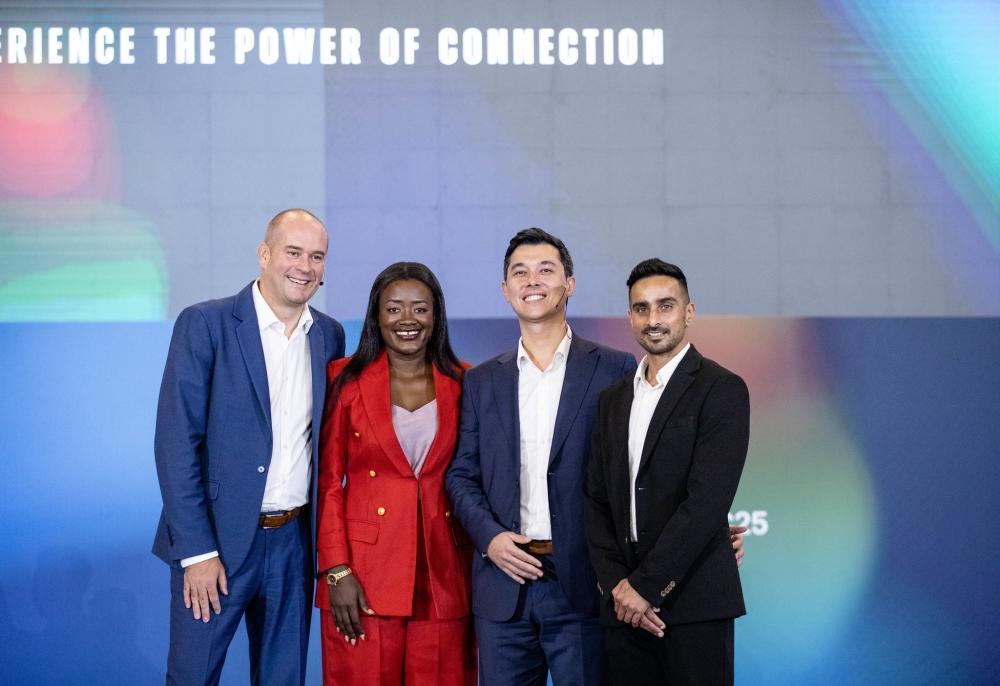Africa-Press – Rwanda. In the race for digital dominance, speed alone no longer defines success. The real advantage lies in becoming AI-native, where artificial intelligence, data-driven insight, and automation form the backbone of every operation.
That was the central message from “AI Enabled Telco: Charting the Course from Telco to Techco”, a session that wrapped up last week at MWC Kigali.
For consumer electronics makers and infrastructure suppliers, this shift isn’t just a small step, it’s changing how the industry works.
As Umut C. Yetgin, Nokia’s Engagement Leader for Advanced Consulting Services in Cloud and Network Services, framed it: “What if your assistants could learn to make decisions? Would you trust them?”
His point was that networks are evolving from static, manually controlled systems into intelligent, self-learning systems. These “autonomous networks,” as industry literature refers to them, are built to sense what is happening, think about what it means, and act accordingly without waiting on humans.
Yetgin laid out how this evolution works, describing three essential components: intent, AI, and automation.
Intent defines the business purpose behind the technology, what the operator seeks to achieve. AI provides the analysis and insights, the thinking that drives decisions, while automation ensures those decisions are executed reliably and at scale, turning vision into tangible results.
When all three are aligned, the network begins to shift from traditional operations into something more dynamic and responsive. But as Yetgin emphasised, “If you only have automation, you cannot address dynamic change. If you have only intent, there is no action. If you have AI only, you are not converting insight to impact.”
He explained that many telcos follow a model that progresses from fully manual operations at Level 0, to partial automation at Levels 1 and 2, then to human-guided automation at Level 3, and finally to full end-to-end automation at Levels 4 and 5, where the network ultimately manages itself while humans simply observe.
For consumer electronics and device makers, their role is changing fast. Devices are no longer just receivers of signals, they’re now active parts of an ecosystem that senses data, analyzes it, and takes action. That can mean rerouting traffic, preventing faults, or upgrading services on the fly.
Consider how Yetgin described the architecture: the sense-think-act model. At the sense level, the network collects detailed data from all parts of the system called “observability.”
At the think level, AI applications interpret that data, make predictions, or detect anomalies.
At the act level, automation intervenes, everything from network configuration updates to recognising a customer may need premium service during heavy load.
Device manufacturers must now deliver hardware and software that fits into this transformation.
Corbin Cao of Huawei explained that traditional manufacturing companies are reinventing themselves as technology firms.
“Our business has moved from simple connectivity to digital intelligence services,” he said, pointing out that hardware is now a platform for services, not just a product.
These changes don’t just stop at network gear or consumer phones. They extend into homes, offices, factories. For example, Cao described a future where home Wi-Fi hubs use AI to detect that a family member has fallen sick and automatically notify caregivers, turning what was once a router into a life-sensing service.
Data is key
Underpinning all this is data. Many experts now say the biggest barrier to autonomous networks is not the AI or the automation but the quality and accessibility of data. If data is fragmented, siloed or delayed, the network cannot “learn” or act reliably.
For manufacturers and tech firms, that means building sensors, devices and platforms that feed into unified data lakes, support real-time analytics and scale efficiently.
It means designing with openness, systems with APIs that allow third-party innovation and integration. Manufacturers must partner, not just supply, if they want to succeed in the techco model.
As the speakers at MWC Kigali noted, the journey is long. No one jumps from L0 to L5 overnight. But by adopting what Yetgin called “architecture, strategy, processes and governance” in parallel, manufacturers and operators can build toward that autonomous future together.
The consumer electronics world now finds itself at the intersection of connectivity and intelligence. Devices are no longer “dumb endpoints.” They are active participants in networks that sense context, adapt in real time and act autonomously.
For manufacturers, success no longer means shipping more units—it means enabling ecosystems of services, insights and experiences.
That shift from telco to techco is real, and for device makers who understand that intelligence and connectivity must be baked in, it is no longer enough to build fast phones or smart devices. They must build machines that think, act and adapt, and that is what makes them part of the next wave.
For More News And Analysis About Rwanda Follow Africa-Press






